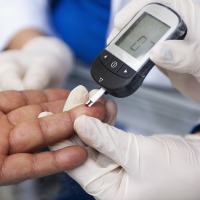Early Detection Is Key for Diabetes Management

A study combining large scale clinical observations and innovative computer modeling suggests that screening to identify Type 2 diabetes followed by early treatment could result in substantial health benefits. Researchers at the University of Michigan Medical School and the Medical Research Council Epidemiology Unit, University of Cambridge (England) used data from the ADDITION-Europe study of diabetes screening and treatment in combination with a computer simulation model of diabetes progression. Results showed that screening followed by treatment led to a reduced risk of cardiovascular disease or death within a 5-year follow-up period when compared to patients having no screening. At 10-years after baseline, the computer model predicted that 22.4% of people with Type 2 diabetes would experience a cardiovascular disease event, such as stroke or heart bypass surgery, if diagnosis and treatment was delayed for 3-years.. This rose to 25.9% with a diagnosis and treatment delay of 6-years. However, if screening and routine care had been implemented, the computer model predicted that only 18.4% would experience a cardiovascular disease event at 10-years after baseline. The simulated incidence of all-cause mortality was 16.4% with a delay of 3-years and 18.2% with a delay of 6-years, compared to 14.6% with early screening and treatment. “Diabetes can be debilitating for patients and costly for healthcare,” said lead author William Herman, MD, a professor at the University of Michigan Medical School. “This research shows that the early identification of diabetes has major health benefits, and supports the introduction of measures such as screening to reduce the time between development of Type 2 diabetes and its treatment.”